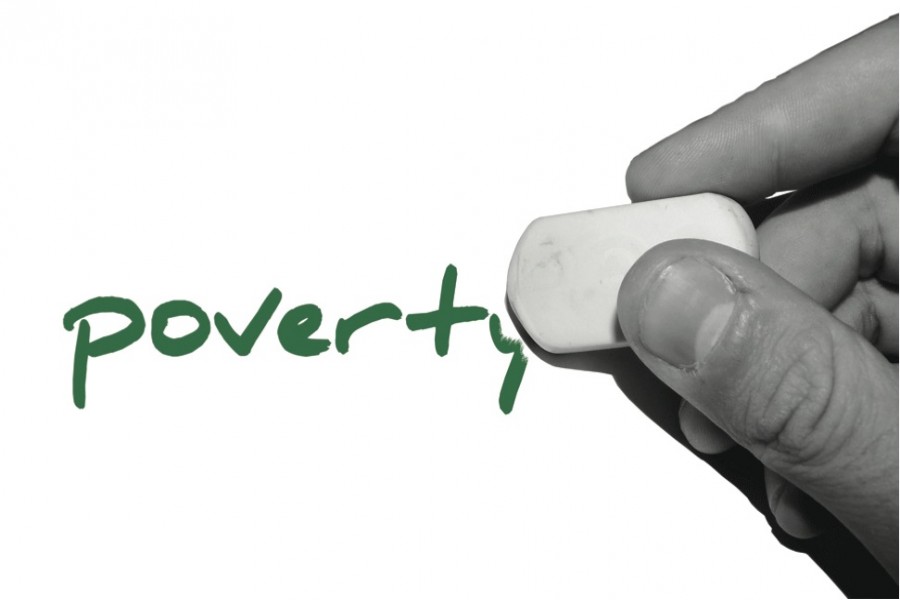There are two competing economic policies - supply side and demand side -- that are often considered and implemented by national governments when the economy slides into a recession. But when the economy is confronted with stagflation - a simultaneous occurrence of high inflation and recession -- the demand driven expansionary monetary and fiscal policies to increase output and employment aggravates inflation further (AD shifting rightward). Alternatively, combating inflation with contractionary aggregate demand (AD) policies would tame inflation (by shifting the AD leftward) but at the risk of a deeper recession. To fight the twin dilemma of stagflation or slow growth and inflation (as experienced in Bangladesh and India) and poverty reduction in developing economies, some aspects of supply side economic policy tools may be prudent.
Supply-side economics (SSE) paradigm argues that creating a favourable business climate by reducing taxes and relaxing production-constraining regulations facilitate job creation, aggregate expenditure, and hence growth. What about the tax cut driven revenue short fall? Well, SSE claims that the higher growth will generate enough revenues which will make up for the lost tax revenue.
The theory of SSE developed by economist Arthur Laffer in 1979, hypothesised that the effect of tax cuts works on a 1-for-1 basis - that is "every dollar cut in taxes reduces government spending, and its stimulative effect, by exactly one dollar". However, that same tax cut triggers a multiplier effect on growth - that is, one dollar in tax cuts translates into more than one dollar of aggregate demand, which stimulates business expansion and in turn, additional job growth. Cutting taxes on dividends, capital gains, and interest income encourages people to save and invest. The supply side stimulus is often labeled as trickle-down economics which promotes the notion that investors, savers, and business owners are the real engines of growth. Therefore, what benefits the wealthy will trickle down to everyone down the line, resulting in job creation and hence poverty reduction as witnessed in many developing countries including those of East and South East Asia.
The idea is that a corporate tax cut generates windfall funds to invest in capital equipment, creates jobs, and hence output expansion. On the other hand, a payroll tax cut incentivises workers to continue employment and others are attracted to join the labour force, increasing labour supply. As a result, the aggregate supply (AS) will shift rightward with the dual rewards of economic growth with declining price level - as if killing two birds with one stone. Let us consider two examples to see if SSE worked.
In the early 1980s, President Ronald Reagan combated stagflation by slashing the top marginal income tax rate from 70 per cent to 28 per cent and the top corporate tax rate from 48 per cent to 34 per cent. The tax cut elixir lifted the economy out of the worst recession since the Great Depression of the 1930s. However, because of concomitant increase in defense spending national debt increased from $1 trillion (when he took office) to $2.86 trillion (when he left office). The important outcome though was the strongest recovery from worst stagflation while the debt had no tangible effect on the economy.
Within a year of assuming the Presidency, Donald Trump approved $1.5 trillion tax Cut and Jobs Act of 2017 which slashed corporate tax rate from 35 per cent to 21 per cent. The tax cut was skewed towards big corporations and the wealthy Wall Street billionaires. It was promoted to boost economic activity through increased investment and job creation. Most estimates show that the economic gains were modest - at best, which had already begun in early 2010 during the Obama administration. Why the outcome was anemic?
Corporation didn't invest most of the tax cut windfall, instead a lopsided amount was expended in paying dividends to stock holders and share buybacks by companies. That tax cut stimulus has boosted the stock market and benefited the company shareholders. In a front-page article on Nov. 17, the New York Times reported, "Indeed, in the third quarter of 2019, business investment in machinery, computers, buildings, and factories dropped at a 3 per cent annual rate".
Many economists argue that the 2017 Trump's tax cut was ill-timed, given that the economy was already expanding with job creation and low inflation. That brings us to the dilemma of timing the tax cut and what type of taxes to cut.
The magnitude of the effects of tax cut on the economy depends on several factors: (1) in what state the economy is - in a growing phase or in a recession; (2) types of taxes being targeted for cut; (3) how high/low the tax rate was before the cut took effect. Numerous studies found that the tax relief had the most effect on growth if taxes were prohibitively high and least, if taxes were already low. A study by the U.S. Congressional Budget Office found that pay roll tax cuts targeted to low income employees was the most cost-effective strategy. The reason is that tax cut to low income earners directly translates into increased spending while tax cut to high income people ends up in savings or paying off debt having little effect on growth.
Although the SSE theory's primary building block is tax cut, its broader perspective is the working of trickle-down economics. In other words, whatever monetary and fiscal policy tools exert favourable effect on the determinants of AS would be golden for the economy regardless of the state of the economy being in a recessionary trap, stagnation trap, high inflation trap or stagflation. The trickle-down economics phenomenon may not have produced desirable growth outcome to advanced economies, it has worked remarkably in reducing poverty in China and its trading partners, south east Asian countries, including India and Bangladesh.
Dr Abdullah A Dewan, formerly a physicist and a nuclear engineer at BAEC, is Professor of Economics at Eastern Michigan University, USA. [email protected]


